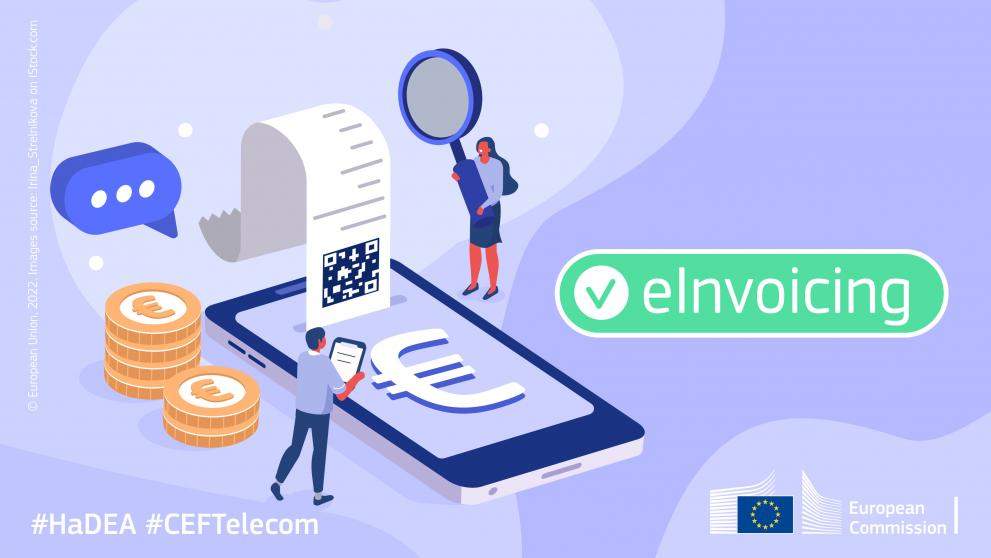The Impact of the CSRD on EU Operating Companies: ESG Reporting and Beyond
Posted: April 2, 2024 |
In:
Sustainability
In a bold move echoing through the corridors of European businesses, the Corporate Sustainability Reporting Directive (CSRD) ushers in a new chapter of accountability and environmental stewardship. Gone are the days when companies could pay lip service to sustainability; the CSRD demands action, transparency, and a deep integration of ESG (Environmental, Social, and Governance) principles into the fabric of corporate reporting. This directive, not just a policy shift but a paradigm shift, represents the European Union’s firm stand on the front lines of the global battle against climate change and social inequality. It’s a clear message: the future of business is sustainable, responsible, and transparent.
At the heart of the CSRD’s mandate is a challenge to EU operating companies: to weave ESG considerations into their daily operations, reporting frameworks, and long-term strategies. This isn’t just about compliance; it’s about contributing to a sustainable future for all. The directive compels companies to report on their ESG impacts comprehensively, offering stakeholders a clear window into their sustainability practices and performance. This move marks a significant departure from earlier, more fragmented reporting standards, aiming to standardize ESG disclosures across the EU and provide investors, consumers, and the public with the information needed to make informed decisions.
Why now? The world stands at a crucial juncture. Climate change, resource depletion, and social inequalities are not just headlines; they are realities affecting millions. The European Union, through the CSRD, is setting a global benchmark for corporate sustainability, encouraging companies not just to mitigate their environmental impact but to become net-positive contributors to the world.
The directive’s introduction in November 2022, with subsequent disclosures required from 2023, indicates the urgency and importance the EU places on sustainable practices. It’s a bold step towards the EU’s broader vision of achieving a climate-neutral economy by 2050, as outlined in the European Green Deal and reinforced by the European Climate Law.
However, the path forward is not without its challenges. Accurate ESG reporting requires robust frameworks, significant data collection, and a deep understanding of sustainability impacts. For many businesses, this represents a substantial shift in how they operate and report their activities. Yet, the promise of the CSRD is clear: a sustainable future is not just necessary; it’s inevitable. As businesses begin to align with these new requirements, they’re not just complying with regulations; they’re joining a movement towards a more sustainable, equitable, and prosperous world.
This introduction invites readers into the world of the CSRD, where sustainability becomes the cornerstone of European business. The journey ahead is complex, demanding, and full of potential. Let’s explore what the CSRD entails, its implications for businesses, and how it fits into the larger puzzle of global sustainability efforts.
Background of the CSRD
The genesis of the Corporate Sustainability Reporting Directive (CSRD) is a testament to the European Union’s evolving response to the urgent call for sustainability. As the landscape of global commerce shifts towards a greener horizon, the CSRD stands as a pivotal development in the EU’s regulatory framework, marking a significant leap from its predecessor, the Non-Financial Reporting Directive (NFRD). The NFRD, ambitious in its time, laid the groundwork by requiring large companies to disclose certain information on the way they operate and manage social and environmental challenges. However, as the appetite for sustainability grew, it became clear that more comprehensive action was needed.
Enter the CSRD, a response not only to the limitations identified within the NFRD but also to a broader societal demand for transparency and accountability in corporate behavior. The European Parliament’s adoption of the CSRD on November 10, 2022, was not merely an administrative update; it was a clarion call to action. This bold legislative move was underpinned by the recognition that sustainable business practices are no longer optional but essential for the long-term viability of both the economy and the planet.
The CSRD is designed to address several critical gaps left by its predecessor. For one, it significantly expands the scope of companies required to report sustainability information, covering all large companies and all companies listed on regulated markets (except listed micro-enterprises). This expansion means that nearly 50,000 companies in the EU are now under its purview, compared to the 11,000 covered by the NFRD. Furthermore, the CSRD introduces more detailed reporting requirements, ensuring that companies provide meaningful and comprehensive disclosures on their environmental and social impacts, governance, and risk management strategies related to sustainability issues.
A driving force behind the CSRD’s development was the collective realization that the fight against climate change and social inequality requires a unified front. The directive aligns with the EU’s Green Deal and the commitment to a climate-neutral continent by 2050. By mandating detailed ESG reporting, the CSRD aims to make sustainability a central aspect of business decision-making, encouraging companies to adopt more sustainable practices and contribute to a more resilient and equitable economy.
Moreover, the CSRD reflects a growing consensus among policymakers, investors, and the public that sustainable business practices are integral to risk management and long-term profitability. With the introduction of the CSRD, the EU is not just regulating; it’s reshaping the marketplace. It’s pushing companies to consider their environmental footprint, social impact, and governance structures as critical components of their business models.
In creating the CSRD, the EU has laid down a gauntlet, challenging companies to be at the forefront of the transition to a sustainable future. This chapter of regulatory evolution signifies a profound shift in how businesses are expected to operate, report, and contribute to society. As we delve deeper into the specifics of the CSRD, it becomes evident that this directive is more than a set of rules; it’s a blueprint for the future of sustainable business in the European Union and beyond.
ESG Reporting Requirements
With the Corporate Sustainability Reporting Directive (CSRD) firmly in place, the European Union has sculpted a new frontier for Environmental, Social, and Governance (ESG) reporting, setting a rigorous standard that demands not just transparency but depth and authenticity in how companies communicate their sustainability journeys. This chapter delves into the core of the CSRD’s ESG reporting requirements, outlining what EU operating companies must now navigate to align with this transformative directive.
At its core, the CSRD aims to make ESG reporting as integral to a company’s annual financial disclosures. Unlike its predecessor, the Non-Financial Reporting Directive (NFRD), which only scratched the surface, the CSRD mandates a more detailed narrative. Companies are required to report not just on their direct impacts but also on how sustainability issues affect their operations, supply chains, and business models. This holistic approach ensures that stakeholders have a clear view of a company’s sustainability efforts, risks, and opportunities.
Key Areas of Focus
The directive categorizes ESG reporting into specific areas, each demanding meticulous attention:
- Environmental Reporting: This goes beyond carbon emissions to include the company’s impact on biodiversity, water use, pollution, and waste management. Companies must detail their strategies for mitigating environmental risks and capitalizing on green opportunities, aligning with the EU’s broader climate targets.
- Social Reporting: Here, the focus shifts to labor practices, human rights, community engagement, and customer satisfaction. The directive underscores the importance of social capital, urging companies to report on how they create value for their employees, communities, and end-users.
- Governance Reporting: Transparency in corporate governance practices is crucial. The CSRD requires disclosures on board diversity, executive pay, anti-corruption policies, and how governance structures support sustainability goals.
A significant innovation introduced by the CSRD is the requirement for digital reporting. Companies must submit their ESG disclosures in a digital format, facilitating easier access, comparison, and analysis of data. Additionally, these reports must undergo independent assurance, adding an extra layer of credibility and reliability to the disclosures.
The shift to this comprehensive reporting framework is not without its challenges. Companies must develop robust systems for data collection, analysis, and disclosure. They need to ensure that their reporting is not only compliant but meaningful, providing insights that reflect their genuine impact and efforts in sustainability.
The CSRD also introduces phased implementation, with larger companies expected to comply earlier, followed by smaller listed entities, providing a transition period for businesses to adapt to these rigorous standards.
As EU operating companies grapple with these detailed ESG reporting requirements, the directive serves as a catalyst for change, driving companies to integrate sustainability into the very core of their business strategies. The CSRD’s comprehensive reporting requirements are not just about compliance; they’re about contributing to a transparent, sustainable, and resilient future. Through these disclosures, companies can demonstrate their commitment to sustainability, building trust with stakeholders and positioning themselves as leaders in the global shift towards a more sustainable economy.
Scope 3 Reporting
One of the most significant and challenging aspects introduced by the Corporate Sustainability Reporting Directive (CSRD) is the inclusion of Scope 3 emissions in the reporting framework. This requirement marks a pivotal shift in how companies assess and disclose their carbon footprint, pushing the boundaries of accountability beyond direct operations to the far reaches of their value chain. This chapter explores the intricacies of Scope 3 reporting, its implications for banks and investment organizations, and the broader impact on the corporate pursuit of sustainability.
Scope 3 emissions encompass all indirect emissions that occur in a company’s value chain, including both upstream and downstream activities. This can range from the extraction and production of purchased materials, to transportation and distribution, and even to the use and end-of-life treatment of products sold. In essence, Scope 3 captures the emissions companies influence but do not directly control, often representing the largest portion of an organization’s carbon footprint.
Under the CSRD, reporting on Scope 3 emissions becomes a requisite for companies operating within the EU. This directive compels organizations to take a comprehensive view of their environmental impact, shining a light on the hidden corners of their carbon footprint. For many companies, this presents a daunting task, as Scope 3 emissions can be difficult to quantify due to their indirect nature and the complexity of modern supply chains.
Banks and investment organizations face a unique challenge under the CSRD’s Scope 3 reporting requirements. They must now assess the carbon footprint of their investments, including loans, equity investments, and other financial services. This requirement aims to drive financial flows towards more sustainable activities, aligning investment portfolios with the EU’s broader sustainability goals. By the end of 2023, these organizations must have frameworks in place to accurately report these emissions, embedding climate risk and opportunity into their financial decision-making processes.
Accurately capturing Scope 3 emissions is fraught with challenges. Companies must navigate a maze of data collection, relying on information from suppliers, customers, and other third parties. The lack of standardized methodologies and the potential for double counting emissions add layers of complexity to this already intricate task. Despite these hurdles, the push for Scope 3 reporting is a critical step towards transparency and accountability in corporate environmental impact.
The inclusion of Scope 3 in the CSRD’s reporting framework is more than a regulatory requirement; it’s a catalyst for change. It encourages companies to engage more deeply with their suppliers and partners, fostering collaboration and innovation towards reducing emissions across the value chain. Moreover, it provides stakeholders with a more accurate picture of a company’s environmental impact, enabling better informed investment and purchasing decisions.
As companies embark on this journey, the task of reporting Scope 3 emissions becomes a pivotal moment in the transition to a low-carbon economy. It not only elevates the role of corporations in addressing climate change but also underscores the interconnectedness of all sectors in the pursuit of sustainability. Through the challenges and complexities of Scope 3 reporting, the CSRD is setting the stage for a more transparent, accountable, and sustainable corporate world.
ESG and Net-Zero Targets
In the vanguard of global sustainability efforts, the Corporate Sustainability Reporting Directive (CSRD) has set forth requirements that meld Environmental, Social, and Governance (ESG) considerations with the ambition of achieving net-zero emissions. This mandate underscores a profound shift, embedding these goals within the strategic framework of companies operating in the European Union. This chapter delves into the critical intersection of ESG reporting with net-zero targets, exploring the implications for businesses striving towards a sustainable future.
The CSRD’s requirements extend beyond traditional reporting, demanding that companies not only disclose their impact on the environment but also outline clear pathways to achieving net-zero greenhouse gas emissions. This integration signifies a recognition that addressing climate change is not merely an environmental issue but a comprehensive challenge that spans social and governance dimensions as well.
For businesses, this means that ESG considerations and net-zero targets must be woven into the fabric of corporate strategy. Companies are compelled to reassess their operations, supply chains, and product offerings through the lens of sustainability. This involves setting science-based targets for reducing emissions, investing in renewable energy, and innovating for a circular economy. Additionally, businesses must ensure that their governance structures support these goals, with clear accountability mechanisms and oversight.
The path to integrating ESG considerations with net-zero targets is fraught with challenges. Companies must balance immediate financial pressures with long-term sustainability commitments. There is also the task of engaging stakeholders – from investors to customers to employees – in these goals, ensuring that the transition to net-zero is inclusive and equitable. Moreover, businesses must navigate the evolving regulatory landscape, adapting to new standards and expectations.
Yet, within these challenges lie opportunities. Companies that successfully integrate ESG considerations with net-zero targets can position themselves as leaders in sustainability, attracting investment and building brand loyalty among increasingly conscientious consumers. Moreover, the pursuit of net-zero opens new avenues for innovation, from the development of green technologies to the redesign of products and services for a low-carbon economy.
The CSRD’s requirements for integrating ESG considerations with net-zero targets are not just about reducing emissions; they are about reshaping the corporate world for a sustainable future. This approach recognizes the interconnectedness of environmental, social, and governance issues and the role of businesses in addressing them. By embedding these considerations into their performance management frameworks, companies contribute to a broader societal shift towards sustainability, driving progress towards the European Union’s ambitious climate goals.
As we move forward, the successful implementation of these requirements will depend on collaboration, innovation, and a shared commitment to a sustainable future. The journey towards ESG integration and net-zero is complex, requiring companies to navigate uncertainties and make difficult decisions. Yet, it is also a journey filled with potential – for businesses to redefine their value, for economies to become more resilient, and for societies to move closer to a sustainable and equitable world.
Challenges and Roadblocks
The path to robust Environmental, Social, and Governance (ESG) reporting under the Corporate Sustainability Reporting Directive (CSRD) is fraught with complexities. As organizations across the European Union work to embed ESG considerations and net-zero targets into their operational and strategic frameworks, they confront a multitude of challenges and roadblocks. This chapter examines the hurdles identified by businesses in their journey toward sustainability reporting and explores potential strategies to overcome these obstacles.
One of the most daunting tasks facing companies is the collection of accurate, comprehensive data across all ESG dimensions. The CSRD requires detailed disclosures that many organizations are unprepared to provide, primarily due to a lack of standardized data collection processes and metrics. Additionally, Scope 3 emissions reporting amplifies this challenge, necessitating data from across the value chain that businesses often do not directly control.
Another significant challenge is the integration of ESG goals and net-zero targets with existing business strategies. This integration requires a fundamental shift in corporate culture and mindset, moving away from short-term profit maximization to long-term value creation. Companies must recalibrate their performance metrics and management frameworks to align with sustainability objectives, a transition that can be met with resistance from within.
The regulatory landscape for ESG reporting is complex and rapidly evolving. Keeping pace with changing requirements demands significant resources and constant vigilance. The CSRD itself represents a step change in reporting obligations, and as regulatory bodies refine and expand these requirements, companies must adapt quickly. The absence of global standards for ESG reporting further complicates compliance efforts, especially for multinational corporations navigating multiple jurisdictions.
Capacity and Expertise Gaps
Many organizations find themselves lacking the necessary expertise to effectively manage ESG reporting and strategy integration. The multidisciplinary nature of sustainability issues requires skills that span environmental science, social policy, governance, and risk management, among others. Building or acquiring this expertise represents a significant investment for companies, particularly smaller firms with limited resources.
Strategies for Overcoming Challenges
To navigate these challenges, companies can adopt several strategies:
- Invest in Data Management: Developing robust systems for data collection, analysis, and reporting is crucial. This might involve leveraging technology to automate data gathering and employing standardized metrics to ensure consistency and comparability.
- Foster a Culture of Sustainability: Integrating ESG and net-zero targets into corporate strategy requires a cultural shift. This can be achieved through leadership commitment, employee engagement, and aligning incentives with sustainability performance.
- Engage with Stakeholders: Collaboration with suppliers, customers, and other partners can help address data gaps, especially in Scope 3 emissions reporting. Transparent communication with stakeholders can also bolster a company’s sustainability credentials.
- Leverage External Expertise: Companies may benefit from consulting with ESG experts, joining industry consortia, or partnering with non-governmental organizations to build their capacity for effective sustainability reporting and strategy implementation.
- Monitor Regulatory Developments: Staying informed about regulatory changes and participating in industry dialogues can help companies anticipate and adapt to new reporting requirements.
Despite these challenges, the transition towards comprehensive ESG reporting and the integration of sustainability into core business functions offer an opportunity for innovation, risk management, and competitive advantage. By addressing these roadblocks head-on, companies can not only comply with the CSRD but also contribute to a sustainable future, demonstrating leadership in corporate responsibility and environmental stewardship.
The Future of ESG Reporting in the EU
As companies navigate the complexities of the Corporate Sustainability Reporting Directive (CSRD), the landscape of Environmental, Social, and Governance (ESG) reporting in the European Union is poised for profound transformation. The directive is not merely a regulatory requirement; it represents a forward-looking vision where sustainability is seamlessly integrated into the corporate DNA. This chapter explores the future implications of the CSRD for ESG reporting, the evolving role of the EU taxonomy for sustainable activities, and the broader shifts expected in corporate sustainability practices.
The CSRD sets a new benchmark for sustainability reporting, raising the bar for transparency, accountability, and depth of disclosure. As companies strive to meet these heightened standards, ESG reporting is expected to become more rigorous, comprehensive, and analytically robust. This evolution will likely encourage a shift from qualitative narratives to quantitative, data-driven insights, providing stakeholders with a clearer understanding of companies’ sustainability performance and impact.
The future of ESG reporting under the CSRD promises a more dynamic interaction between companies and their stakeholders. Investors, customers, employees, and the wider community will have access to detailed information on corporate sustainability efforts, enabling more informed decision-making. This transparency is anticipated to foster greater trust and engagement, pushing companies to be more responsive to stakeholder concerns and expectations around sustainability.
A key element shaping the future of ESG reporting is the EU taxonomy for sustainable activities. This classification system, designed to guide investment towards environmentally sustainable activities, will become increasingly intertwined with ESG reporting practices. Companies will need to demonstrate how their operations and investments align with the taxonomy’s criteria, further embedding sustainability considerations into strategic and financial decision-making processes.
As ESG reporting under the CSRD becomes more ingrained in corporate practices, it is expected to act as a catalyst for innovation. Companies will be encouraged to develop new products, services, and technologies that reduce environmental impact and enhance social value. This drive towards innovation will be crucial in addressing pressing global challenges, such as climate change and social inequality, and in advancing the EU’s goals for a sustainable, inclusive economy.
The trajectory set by the CSRD indicates a future where sustainability is not just an adjunct to business but a core driver of value creation. Companies that embrace the principles of ESG reporting and align their operations with sustainability goals are likely to emerge as leaders in resilience, adaptability, and long-term success. This transition requires a holistic approach, incorporating sustainability into every aspect of business operations, from supply chain management to product development and beyond.
The CSRD is reshaping the landscape of corporate reporting in the European Union, establishing a framework for sustainability that aligns with the broader objectives of the European Green Deal. As companies adapt to these new requirements, the future of ESG reporting is set to be characterized by greater transparency, stakeholder engagement, and a commitment to sustainability that drives business innovation and societal progress. In this evolving context, the role of companies in contributing to a sustainable future has never been more critical, nor the opportunity greater. The journey towards comprehensive ESG reporting and sustainability integration is challenging but ultimately rewarding, offering a pathway to sustainable growth and long-term value creation for all stakeholders.
Conclusion
The Corporate Sustainability Reporting Directive (CSRD) marks a watershed moment in the evolution of corporate responsibility and environmental stewardship within the European Union. Far from being just another regulatory hoop to jump through, the CSRD embodies a profound shift towards integrating Environmental, Social, and Governance (ESG) principles at the heart of business operations. This transition towards transparency, accountability, and sustainability is not merely a response to regulatory pressure but a strategic imperative in today’s world, where the impact of businesses on the planet and society is under intense scrutiny.
The journey mapped out by the CSRD is ambitious, compelling companies across the EU to not only reckon with their environmental footprint and social impact but to also reimagine their role in a sustainable future. By demanding comprehensive ESG disclosures, the directive challenges organizations to align their operations with the broader goals of the European Green Deal and the global push towards net-zero emissions. In doing so, it opens up new avenues for innovation, stakeholder engagement, and long-term value creation, setting a new standard for corporate reporting that is likely to influence practices well beyond the EU’s borders.
However, the path forward is not devoid of challenges. From the intricacies of Scope 3 emissions reporting to the integration of net-zero targets into corporate strategies, companies face a complex landscape of requirements. Yet, these challenges also present opportunities for growth, differentiation, and leadership in the global movement towards sustainability. By embracing the principles of the CSRD, companies can not only enhance their resilience and adaptability but also contribute to a more sustainable and equitable world.
In conclusion, the CSRD represents more than a regulatory milestone; it signifies a shift in the narrative around corporate sustainability, from optional to essential. As companies navigate this new terrain, they are not just adapting to a set of requirements; they are participating in a broader societal shift towards sustainability. The success of this endeavor will hinge on collaboration, innovation, and a shared commitment to a sustainable future. In this light, the CSRD is not just a directive; it’s a blueprint for the future of business in a world where sustainability is at the forefront of every strategic decision.















